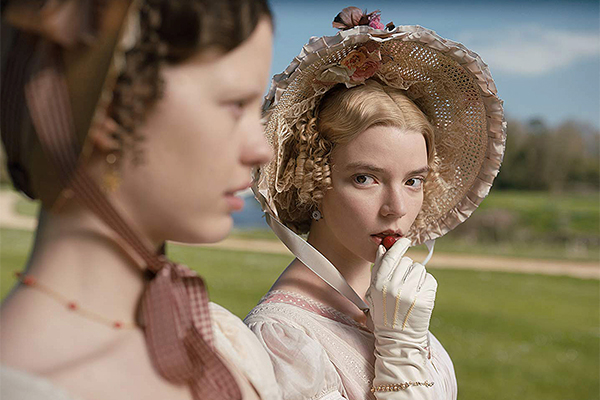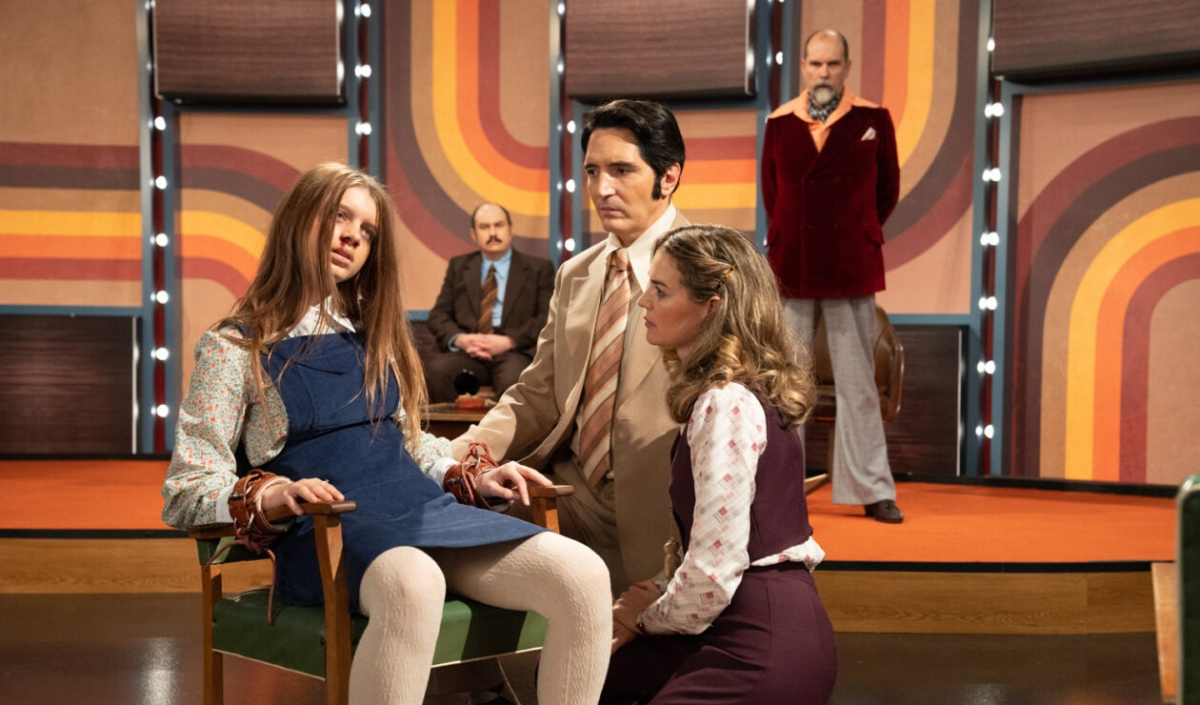Based on the eponymous novel by Jane Austen and reimagined by the writer-director team Eleanor Catton and Autumn de Wilde, “Emma.” is a delightfully candy-colored satirical exercise in presumption.
The story is one that’s been told before: Emma, a young woman of wealth but not consequence in 19th century England, finds that her matchmaking abilities are not as good as she thought through several romantic misadventures. The plot of “Emma.” isn’t new — the 1995 film “Clueless” is also an adaptation of Austen’s 1815 novel, but with a contemporary spin.
However, de Wilde’s 2020 take on early 1800s social life is something special. The casting done for this film, with Anya Taylor-Joy (“The Witch,” “Thoroughbreds”) as the title character, Johnny Flynn as Mr. Knightley and Bill Nighy as Emma’s father, Mr. Woodhouse, is spot on. Taylor-Joy has perfected her craft of portraying sassy teenage girls to the point that it’s a stereotype of her career. In “Emma.” this works to her advantage. Emma Woodhouse is a gracious queen bee without equal in the small village of Highbury. Her portrayal epitomizes the tone of the novel, where presumptions and assumptions land her in an egg-faced mess.
Flynn is Taylor-Joy’s match in his portrayal of Mr. Knightley. His delivery of what can only be described as 19th century shade will leave the audience in fits of laughter, which is a real feat considering how difficult it is to convey humor in high-class English. The serious, overdramatic nature of the communication style characteristic to the time period isn’t a hindrance in this case, as Flynn’s facial expressions and body language convey all the sass his polite tone does not.
In the novel, Mr. Woodhouse is a funny character. In the 2020 film, Nighy is an absolute riot. There is a particular scene pulled straight from the novel where Mr. Woodhouse uses draft screens of varying sizes to give his daughter and Mr. Knightley the illusion of privacy, which Nighy executes with all the zest and zeal the film commands. His quiet, judgmental delivery of duplicitous politeness is the perfect accompaniment to Emma’s social blunders.
The color grading and overall set design of the film is in the style of the Gilded Age, with pastels and golds reigning supreme. Using a rococo revivalist approach, art director Alice Sutton and set designer Stella Fox have created a virtual confectioner’s dream, where everything looks like a well-decorated cake.
Aside from the set design, the cinematography is reminiscent of Wes Anderson’s “Moonrise Kingdom,” with stationary shots showcasing movement from a fixed vantage point. This places the viewer in the middle of the passive actions of Emma Woodhouse and her friends. It’s directly juxtaposed with a head-on shot of Taylor-Joy delivering Emma’s advice to her dearest friends about love and relationships with PSA-like seriousness.
While the story of “Emma.” is nowhere near being new, de Wilde and Catton’s take on the classic is divine. Taylor-Joy is a delight as Emma Woodhouse herself, complemented by the casting of Flynn and Nighy, who create soft satire with bite. As beautiful to see as it is to hear, “Emma.” sets the bar high for classic adaptations this decade.
Rating: 5 out of 5 stars





















